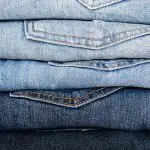Are you new to quilting and wondering whether you should wash your fabric before starting your project? This is a common question among quilters, and the answer may not be as straightforward as you think.
While some quilters swear by pre-washing as a way to prevent shrinkage and bleeding, others prefer to work with unwashed fabric for a crisper look and easier handling.
In this article, we will explore the pros and cons of pre-washing fabric, as well as factors to consider before making your decision.
Before we dive in, it’s important to note that there is no right or wrong answer when it comes to washing fabric for quilting. Ultimately, the decision comes down to personal preference and the specific needs of your project.
By understanding the advantages and disadvantages of pre-washing, as well as alternative approaches, you can make an informed decision that will give you the best results for your quilting project.
So let’s take a closer look at the pros and cons of pre-washing, and what you should consider before taking the plunge.
Table of Contents
Pros of Pre-Washing Fabric
Pre-washing fabric has its benefits, such as removing excess dye and shrinking the fabric to prevent future warping. It’s a good idea to pre-wash your fabric if you’ll be using it for a quilt that will be washed frequently. This will prevent any unwanted shrinkage or color bleeding after the quilt is finished.
Another benefit of pre-washing is that it can soften the fabric, making it easier to work with. Some quilters prefer the look and feel of washed fabrics in their quilts. Additionally, pre-washing can help remove any chemicals or residue that may be present in the fabric from the manufacturing process.
Keep in mind that pre-washing may not be necessary for all fabrics. Some fabrics, such as batiks or precuts, are often pre-washed by the manufacturers and may not require any additional washing. It’s always a good idea to read the care instructions on the fabric before deciding whether or not to pre-wash.
Ultimately, the decision to pre-wash is up to you and your personal preferences as a quilter.
Cons of Pre-Washing Fabric
However, if you skip the pre-washing step, you risk potential shrinkage and color bleeding in your finished quilt. This is because fabrics are often treated with chemicals during production, which can cause them to shrink or bleed when exposed to water or heat. Pre-washing allows you to address these issues beforehand, ensuring that your quilt will maintain its shape and color over time.
Despite these benefits, there are also some cons to pre-washing fabric. For one, it can be time-consuming and labor-intensive, especially if you have a large amount of fabric to wash. Additionally, pre-washing can cause some fabrics to lose their stiffness or texture, which can affect the overall appearance of your quilt. Finally, pre-washing may not always be necessary, especially if you are using high-quality fabrics that are less likely to shrink or bleed.
To help you decide whether or not to pre-wash your fabric, consider the following table:
| Pros of Pre-Washing Fabric | Cons of Pre-Washing Fabric |
|---|---|
| Prevents shrinkage and color bleeding | Time-consuming and labor-intensive |
| Removes chemicals and residues | Can affect fabric texture and appearance |
| Ensures long-term durability | May not always be necessary |
Ultimately, the decision to pre-wash your fabric comes down to personal preference and the specific needs of your project. While pre-washing can be a useful way to prevent potential problems down the line, it is not always necessary and may not be worth the extra time and effort for some quilters. Consider your options carefully and choose the approach that works best for you.
Factors to Consider Before Washing
Before tossing your fabric into the washing machine, it’s important to consider a few key factors that can impact the final result of your quilt. Here are some things to keep in mind:
-
Fabric Type: Different types of fabric have different properties, so it’s important to consider how the fabric will behave when washed. Always check the care instructions on the fabric label before washing.
-
Colorfastness: If you’re using fabrics with different colors or patterns in your quilt, it’s important to make sure that they won’t bleed or fade in the wash. To test for colorfastness, dampen a small piece of fabric and rub it against a white cloth. If the color transfers, you may want to prewash the fabric to prevent any bleeding or fading.
-
Pre-Shrinking: If you’re planning on using your quilt frequently or washing it often, you may want to consider pre-shrinking your fabric before quilting. To pre-shrink your fabric, simply wash it in hot water and dry it on high heat before cutting it for your quilt.
-
Personal Preference: Ultimately, the decision to pre-wash your fabric before quilting comes down to personal preference. Some quilters prefer the look and feel of unwashed fabric, while others prefer the peace of mind that comes with knowing their fabrics won’t shrink or bleed in the wash. Consider your own preferences and the specific needs of your quilt before making a decision.
Alternatives to Pre-Washing
If you’re looking for a quicker and easier alternative, consider using pre-cut fabrics or pre-washed fabrics for your quilt. Pre-cut fabrics come in a variety of shapes and sizes, such as squares or strips, and are already cut to the perfect size for your project. This eliminates the need for washing and cutting the fabric yourself, saving you time and effort. Additionally, pre-washed fabrics have already gone through the washing process, so you don’t have to worry about any shrinkage or bleeding during the quilting process.
Here’s a table to help you decide whether to pre-wash or not:
| Factors | Pre-Washing | Not Pre-Washing |
|---|---|---|
| Fabric type | Recommended for certain types of fabrics, such as flannel or batiks | Not necessary for all fabric types |
| Time | Adds extra time to the quilting process | Saves time in the quilting process |
| Personal preference | Some quilters prefer to pre-wash for various reasons, such as removing chemicals or allergens | Some quilters prefer not to pre-wash for various reasons, such as preserving the color or texture of the fabric |
Ultimately, the decision to pre-wash or not is up to you and your personal preference. If you’re short on time or want to skip the extra step, consider using pre-cut or pre-washed fabrics. However, if you have specific concerns about the fabric or simply prefer to wash before quilting, go ahead and give it a good wash before starting your project. As long as you’re happy with the end result, that’s all that matters!
Tips for Pre-Washing Fabric
Get ready to take a journey through the pre-washing process with these helpful tips and tricks. If you’ve decided to pre-wash your fabric before quilting, there are a few things to keep in mind.
First, be sure to separate your fabrics by color to prevent bleeding. Use a mild detergent and avoid fabric softeners, as they can leave a residue on your fabric.
Once you’ve sorted your fabrics, wash them in cold water on a gentle cycle. If you’re using a top-loading washing machine, consider placing your fabrics in a mesh laundry bag to prevent tangling.
After the wash cycle is complete, tumble dry your fabrics on low heat or air dry them on a clothesline. Once your fabrics are dry, press them with a warm iron to remove any wrinkles.
By pre-washing your fabrics, you can avoid any shrinkage or bleeding that may occur during the quilting process. It may seem like an extra step, but it can save you a lot of frustration later on.
With these tips, you can ensure that your pre-washing process goes smoothly and your fabrics are ready for quilting.
Tips for Quilting with Unwashed Fabric
When quilting with unwashed fabric, it’s important to keep in mind that the colors may bleed and the fabric may shrink during the first wash. It’s a good idea to test a small swatch of the fabric before using it to see if it bleeds or shrinks. If it does, then it’s best to pre-wash the fabric to prevent any issues in the finished quilt.
If you choose to quilt with unwashed fabric, be careful when selecting the fabrics for your project. Make sure to choose fabrics that are colorfast and won’t bleed onto each other. Also, avoid mixing fabrics of different types or weights, as this can cause uneven shrinkage and distortion in the finished quilt.
Lastly, consider the care instructions for the finished quilt when quilting with unwashed fabric. If the quilt will be washed frequently or exposed to moisture, pre-wash the fabrics to prevent any issues down the line. However, if the quilt will be used primarily as a decorative piece, quilting with unwashed fabric may be a viable option.
- Locating Reliable 100% Polyester Fabric Suppliers in Bangladesh - June 21, 2025
- T-Shirt Fabric Price in Bangladesh for Bulk Manufacturing - June 21, 2025
- Price Guide: Good Knight Fabric Roll-On in Bangladesh - June 21, 2025




